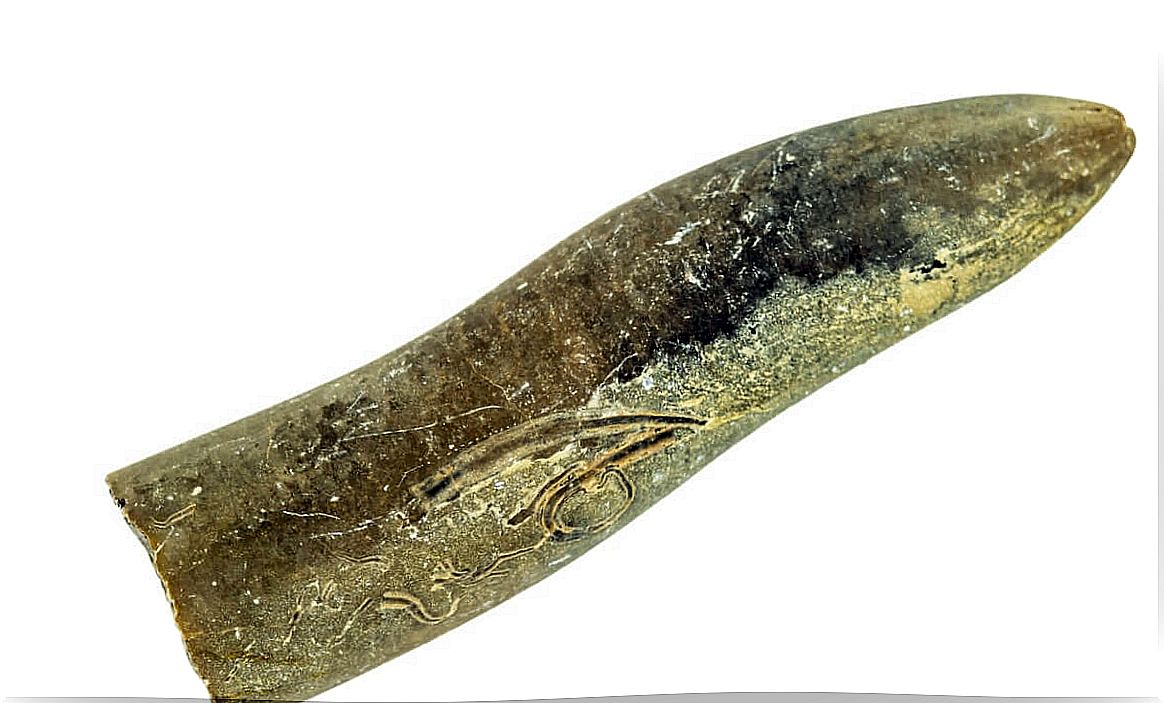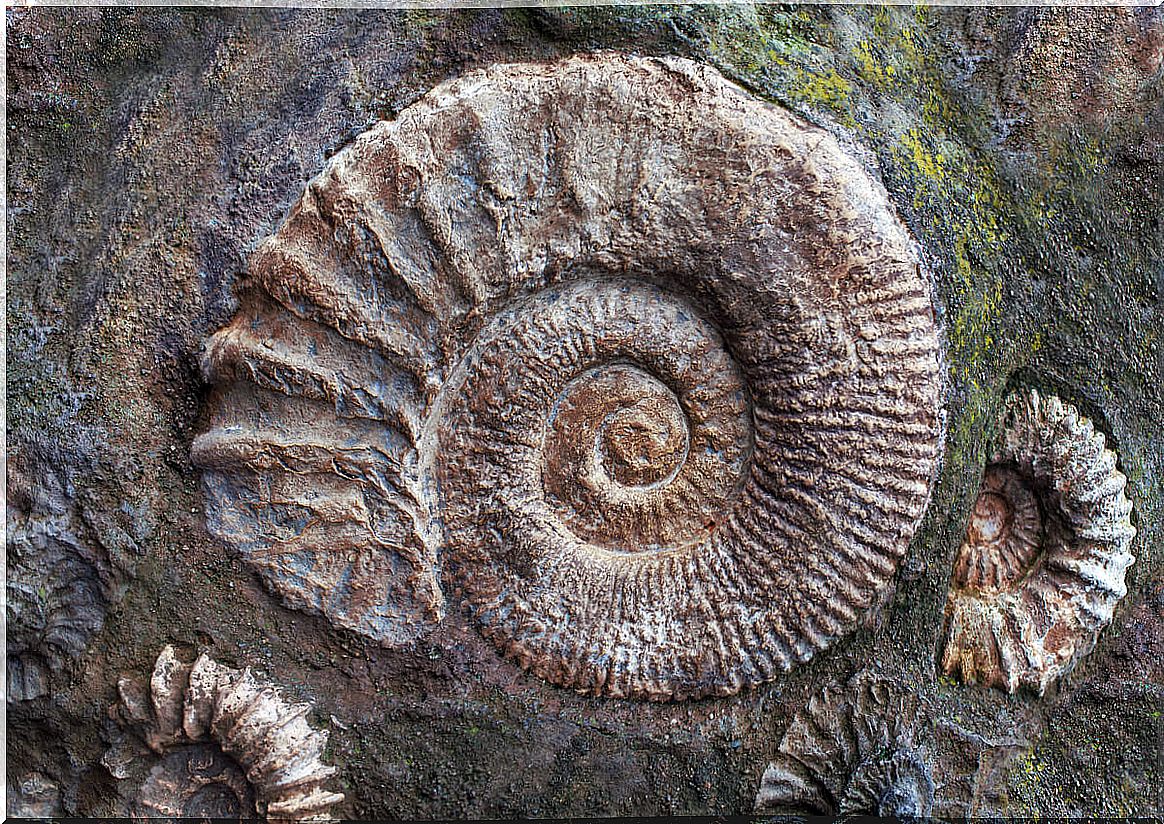Nectocaris Pteryx: The Grandfather Of Cephalopods 500 Million Years Ago

The evolutionary history of mollusks – and specifically the origin of cephalopods – still holds many mysteries. The reclassification of an ancient fossil animal, called Nectocaris pteryx , has shed some light on these issues.
This animal was discovered in 1976 from a single specimen that was part of the Burgess Shale formation, one of the most exceptional fossil deposits ever found. Its strange appearance and poor condition prevented it from being properly classified.
However, 91 new fossil specimens have allowed us to discover the truth about this animal and draw conclusions about the first cephalopods that inhabited the Earth. Read on if you want to learn more about it.
The history of Nectocaris pteryx
The first specimen of Nectocaris pteryx was badly degraded, which made it extremely difficult to identify. For this reason, this ancient creature had been classified as an ancestral arthropod, the group to which crustaceans and insects belong. It was also included within the chordates, the clade that contains mammals and reptiles.
However, an article published in 2010 in the journal Nature has been able to examine the many new specimens discovered. Thanks to this, researchers have clarified the characteristics and habitat – temporal and spatial – of this animal in the history of living beings.
This study has revealed that this animal is actually the oldest cephalopod ever found. This makes it a possible ancestor of the octopuses and squid that exist today.
Nectocaris existed about 500 million years ago, so it has delayed the estimated date of origin of cephalopods by another 30 million years. This indicates that cephalopods arose right at the beginning of the evolution of multicellular organisms and, therefore, are one of the oldest animal groups in the world.

Nectocaris pteryx characteristics
These remote cephalopods were very small. The specimens found vary in size, but measure around 3.7 centimeters on average. Small size was a common trait for cephalopods of the time.
The body of this animal was flattened, soft and diamond-shaped. It had a fin that ran down each side of the body and was larger near the head. Unlike other ancient cephalopods, Nectocaris pteryx did not have a shell.
Its small head appeared at the end of a short neck. In it you could find 2 long tentacles, which were flexible and became thinner towards the tip. The head also supported 2 eyes, separated by small stems or peduncles. It is possible that these eyes were complex, with a structure similar to that of a camera, as occurs in today’s octopuses.
Finally, one of the most important aspects was the presence of a siphon. This flexible structure arose in the ventral part of the neck, widened when moving away from it and connected with an internal cavity, where the gills were.
Ecology of the archaic cephalopod
This mollusk was capable of active swimming – thanks to its lateral fins – and could give great accelerations, expelling water through its siphon. It probably lived near the seabed, flying over it in search of food.
Additionally, Nectocaris pteryx had predatory or scavenging habits. It fed on small soft animals on the seabed, which it caught and manipulated with its long tentacles.
Exactly how it consumed its prey is still unknown, since the mouthparts of this animal have not been preserved. The rest of the cephalopods have a sharp beak and radula – a serrated tongue with which they scrape food. These structures may not have fossilized or were not present in Nectocaris.
Some evolutionary mysteries
In addition to the mouthparts, the existence of this animal raises other questions about the evolution of mollusks, which need more fossils to be resolved.
One of them deals with tentacles. Nectocaris only has 2, which could mean that cephalopods started with a reduced number of tentacles that increased over the years. Another possibility is that the Nectocaris ancestors had more tentacles, but that this animal lost or merged them.
Another of the most intriguing issues is its absence of a shell. It is believed that the ancestor of these animals was similar to a monoplacophore, whose shell would have undergone modifications to house gas and achieve flotation.
Nectocaris did not have a shell, but could float and swim freely. Therefore, cephalopods might not descend from an ancestor with external protection. It is possible that the shell of nautiluses, ammonites, and other relatives was a later adaptation.

As has been observed, this ancient cephalopod has answered several of the questions about the evolution of mollusks, but it has also generated some others. The relationships of these animals are still largely unknown, so more research is needed.









